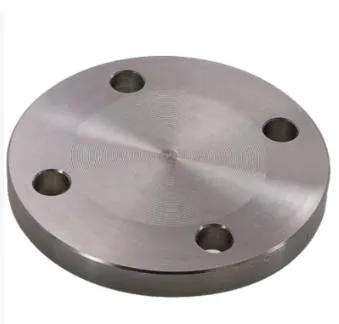-
Cangzhou Yulong Steel Co., Ltd.
-
Phone:
+86 13303177267 -
Email:
admin@ylsteelfittings.com
- English
- Arabic
- Italian
- Spanish
- Portuguese
- German
- kazakh
- Persian
- Greek
- French
- Russian
- Polish
- Thai
- Indonesian
- Vietnamese
- Zulu
- Korean
- Uzbek
- Hindi
- Serbian
- Malay
- Ukrainian
- Gujarati
- Haitian Creole
- hausa
- hawaiian
- Hebrew
- Miao
- Hungarian
- Icelandic
- igbo
- irish
- Japanese
- Javanese
- Kannada
- Khmer
- Rwandese
- Afrikaans
- Albanian
- Amharic
- Armenian
- Azerbaijani
- Basque
- Belarusian
- Bengali
- Bosnian
- Bulgarian
- Catalan
- Cebuano
- China
- China (Taiwan)
- Corsican
- Croatian
- Czech
- Danish
- Esperanto
- Estonian
- Finnish
- Frisian
- Galician
- Georgian
- Kurdish
- Kyrgyz
- Lao
- Latin
- Latvian
- Lithuanian
- Luxembourgish
- Macedonian
- Malgashi
- Malayalam
- Maltese
- Maori
- Marathi
- Mongolian
- Myanmar
- Nepali
- Norwegian
- Norwegian
- Occitan
- Pashto
- Dutch
- Punjabi
- Romanian
- Samoan
- Scottish Gaelic
- Sesotho
- Shona
- Sindhi
- Sinhala
- Slovak
- Slovenian
- Somali
- Sundanese
- Swahili
- Swedish
- Tagalog
- Tajik
- Tamil
- Tatar
- Telugu
- Turkish
- Turkmen
- Urdu
- Uighur
- Welsh
- Bantu
- Yiddish
- Yoruba

Nov . 23, 2024 15:20 Back to list
thread hose fitting
Understanding Thread Hose Fittings A Comprehensive Guide
Thread hose fittings are essential components in various fluid transfer applications across numerous industries. These fittings are crucial for creating secure, leak-proof connections between hoses and equipment, ensuring efficient and safe operation. This article will explore the different types, applications, and advantages of thread hose fittings.
What Are Thread Hose Fittings?
Thread hose fittings are mechanical components characterized by their threaded design, allowing them to attach to hoses, pipes, or other fittings. These threads can be either male or female, depending on the fitting type and the nature of the connection required. Typically made from durable materials such as brass, stainless steel, or plastic, thread hose fittings are designed to withstand high pressures and resist corrosion, making them suitable for varied environments.
Types of Thread Hose Fittings
Thread hose fittings come in several varieties, each tailored for specific applications
1. NPT (National Pipe Thread) This is a common standard in the United States, featuring tapered threads that ensure a tight seal as the fittings are tightened together.
2. BSP (British Standard Pipe) Used predominantly in the UK and some other countries, BSP fittings may feature either tapered or parallel threads. They are versatile and often used in hydraulic and pneumatic systems.
3. JIC (Joint Industry Council) Commonly used in the automotive and aerospace industries, JIC fittings utilize a 37-degree flare and are designed to create a strong connection that can handle high-pressure scenarios.
4. Metric Threads Some international applications require metric threads, which are standardized thread sizes in millimeters. They are often found in European machinery and equipment.
Applications
thread hose fitting

Thread hose fittings are widely used in several sectors, including
- Automotive Connecting hoses to fuel systems, cooling systems, and hydraulic lines. - Industrial Applied in manufacturing plants for transfer lines, pneumatic systems, and hydraulic machinery. - Agricultural Essential for irrigation systems, connecting hoses to pumps, and fluid delivery systems. - Marine Used to connect hoses in boats and ships for fuel, water, and hydraulic systems.
Advantages of Thread Hose Fittings
The use of thread hose fittings offers numerous advantages
1. Versatility By offering various thread types and materials, these fittings cater to diverse applications and environments.
2. Leak Prevention The threaded design enables a secure connection that minimizes the risk of leaks, vital for safety in fluid transfer operations.
3. Ease of Use Thread hose fittings can be easily connected and disconnected, facilitating maintenance and repairs without specialized tools.
4. Durability Made from robust materials, these fittings are engineered to withstand harsh conditions, including extreme temperatures and pressures.
Conclusion
Thread hose fittings play a pivotal role in fluid transfer applications, providing secure, reliable, and versatile connections across various industries. Understanding their types, applications, and benefits is essential for any professional working with hoses and fluid systems, ensuring optimal performance and safety in their operations. As technology progresses, the development of new materials and designs will continue to enhance the efficiency and reliability of thread hose fittings in the future.
Latest news
-
ANSI 150P SS304 SO FLANGE
NewsFeb.14,2025
-
ASTM A333GR6 STEEL PIPE
NewsJan.20,2025
-
ANSI B16.5 WELDING NECK FLANGE
NewsJan.15,2026
-
ANSI B16.5 SLIP-ON FLANGE
NewsApr.19,2024
-
SABS 1123 FLANGE
NewsJan.15,2025
-
DIN86044 PLATE FLANGE
NewsApr.19,2024
-
DIN2527 BLIND FLANGE
NewsApr.12,2024
-
JIS B2311 Butt-Welding Fittings LR/SR 45°/90° /180°Seamless/Weld
NewsApr.23,2024











